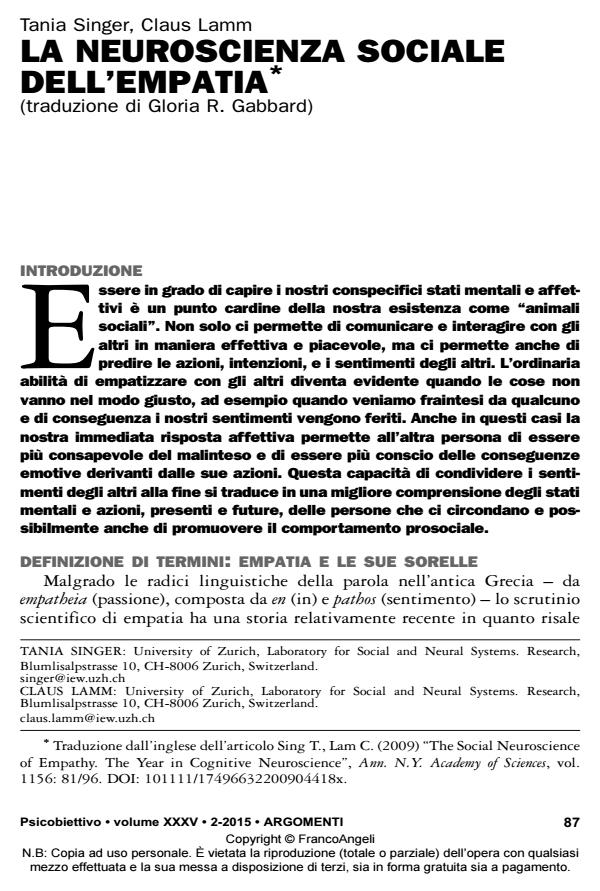The social neuroscience of empathy
Journal title PSICOBIETTIVO
Author/s Tania Singer, Claus Lamm
Publishing Year 2015 Issue 2015/2
Language Italian Pages 22 P. 87-108 File size 133 KB
DOI 10.3280/PSOB2015-002005
DOI is like a bar code for intellectual property: to have more infomation
click here
Below, you can see the article first page
If you want to buy this article in PDF format, you can do it, following the instructions to buy download credits

FrancoAngeli is member of Publishers International Linking Association, Inc (PILA), a not-for-profit association which run the CrossRef service enabling links to and from online scholarly content.
The phenomenon of empathy entails the ability to share the affective experiences of others. In recent years social neuroscience made considerable progress in revealing the mechanisms that enable a person to feel what another is feeling. The present review provides an in-depth and critical discussion of these findings. Consistent evidence shows that sharing the emotions of others is associated with activation in neural structures that are also active during the first-hand experience of that emotion. Part of the neural activation shared between self- and other-related experiences seems to be rather automatically activated. However, recent studies also show that empathy is a highly flexible phenomenon, and that vicarious responses are malleable with respect to a number of factors, such as contextual appraisal, the interpersonal relationship between empathizer and other, or the perspective adopted during observation of the other. Future investigations are needed to provide more detailed insights into these factors and their neural underpinnings. Questions such as whether individual differences in empathy can be explained by stable personality traits, whether we can train ourselves to be more empathic, and how empathy relates to prosocial behavior are of utmost relevance for both science and society.
Keywords: Empathy; Social Neuroscience; Pain; fMRI; Anterior Insula (AI); Anterior Cingulate Cortex (ACC); Prosocial Behavior; Empathic Concern; Altruism; Emotion Contagion
- Empathy Vincenzo Auriemma, pp.89 (ISBN:978-3-031-38859-0)
Tania Singer, Claus Lamm, La neuroscienza sociale dell’empatia in "PSICOBIETTIVO" 2/2015, pp 87-108, DOI: 10.3280/PSOB2015-002005